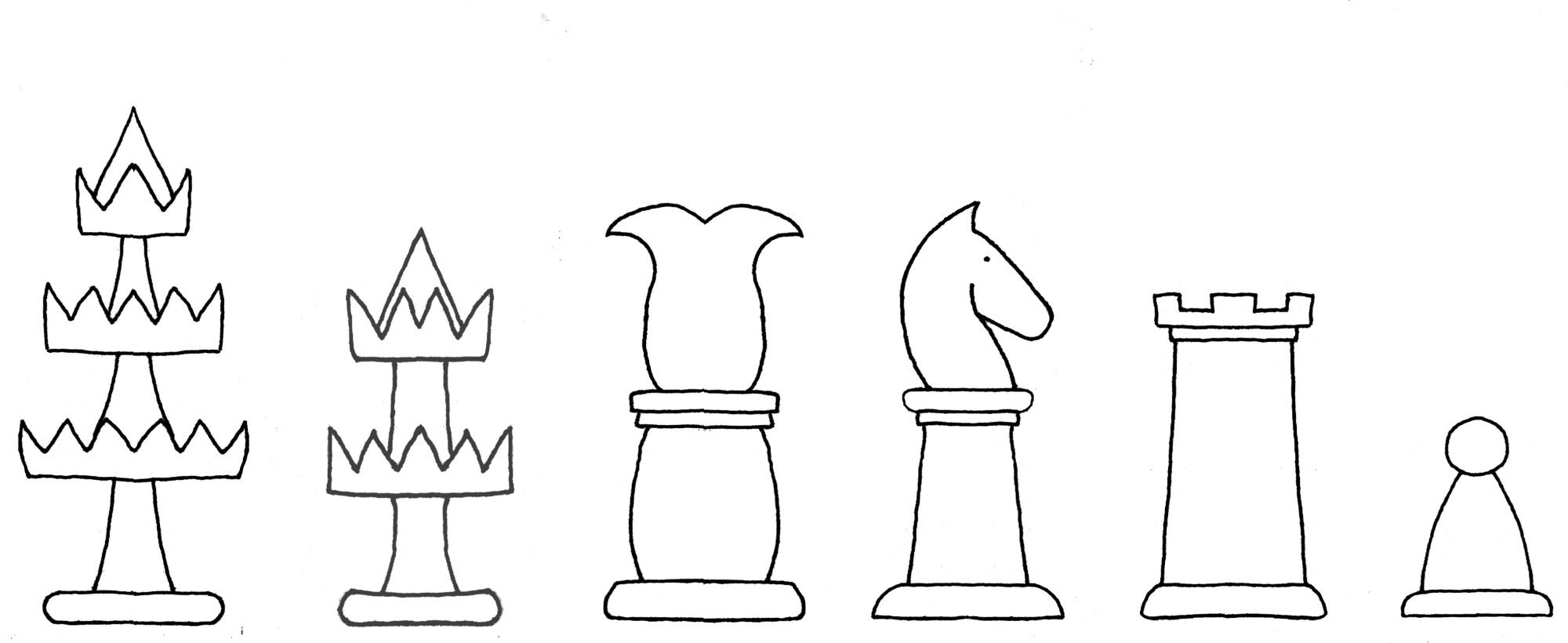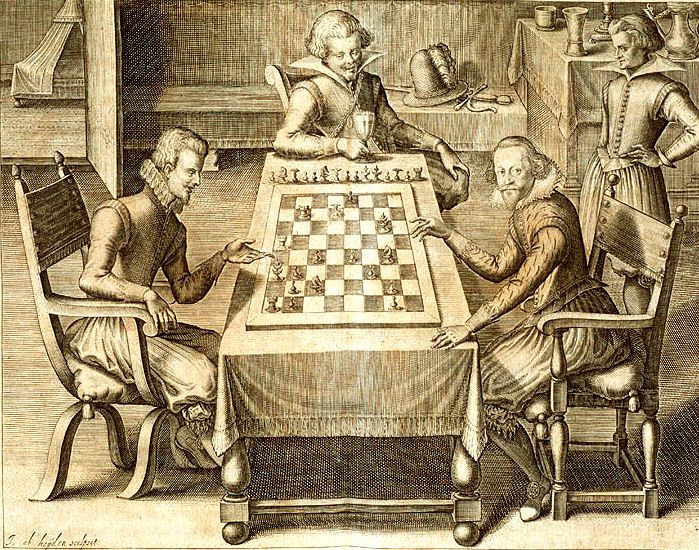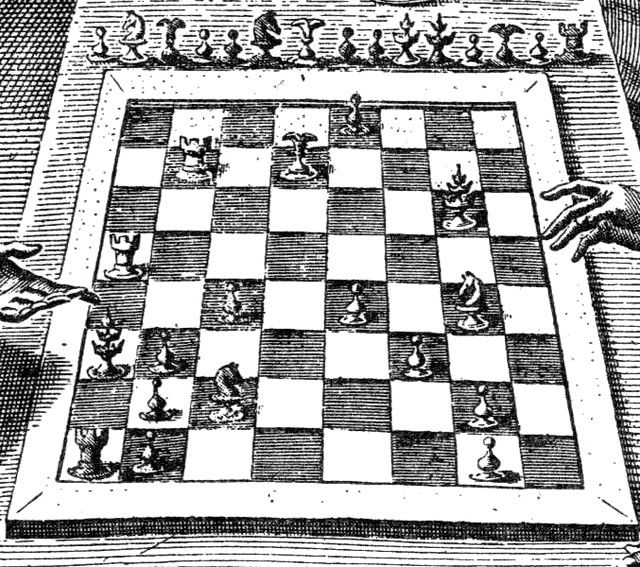The seventeenth century
The chess set of Gustav Selenus
This chess set published by Augustus the Younger, Duke of Brunswick-Lüneburg, writing as Gustav Selenus in his Das Schach-oder König-Spiel (The Chess or King Game) in 1616. It has, in common with some sets from the mid- to late-1500s across Europe, a horse's head on a pedestal representing the knight, and a castle tower representing the rook. While the horse's head appears first in the late fifteenth century in the chess set illustrating Luis Ramerez de Lucena’s Repetición de Amores y Arte de Ajedrez con 101 Juegos de Partido, the castle tower’s first appearance is some 100 years after this, probably in later editions of the works of Pedro Damiano. In the Selenus set the bishop still retains a form that resembles the stylised prongs of the early medieval elephant, though pointing downwards, with the bishop’s mitre shape familiar in most modern chess sets yet to fully evolve and be adopted.
Both the king and queen have forms that are identical to those represented in Hans Mielich’s Albrecht and Anna Playing Chess (1552), though perhaps a little broader and less tall. The king has three tiers of crowns and the queen two. The board is set out as black is forced into checkmate by white, with captured pieces conveniently placed in a line behind the board for the reader to clearly see.

This is the first chess set of the so-called Selenus style, which is typified by tall delicately-ornamented lathe-turned pieces with tiers of crowns. In many later sets it is reportedly difficult to distinguish between some pieces, while their height made them a little too easy to topple when reaching over the board.


